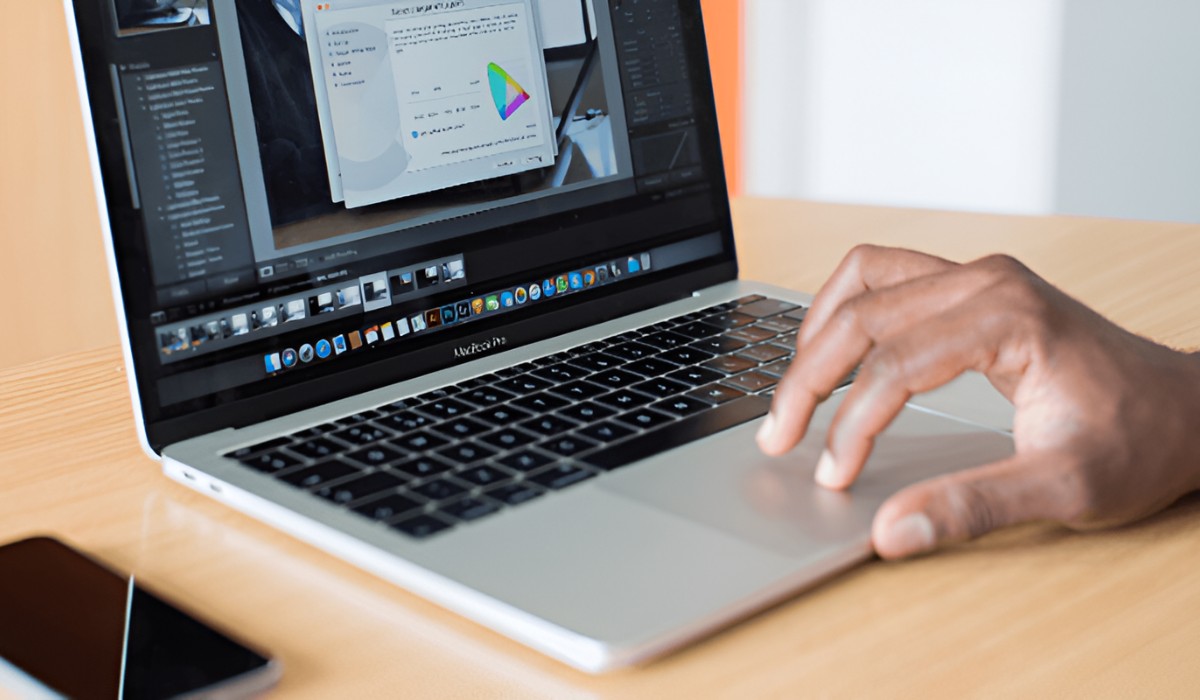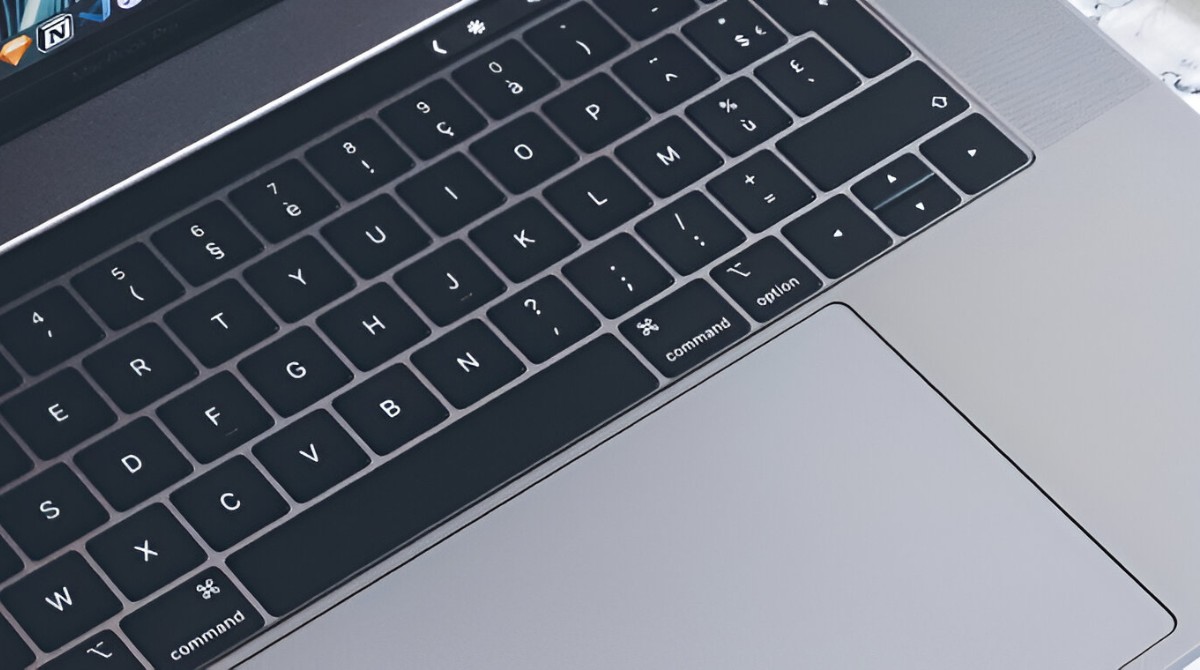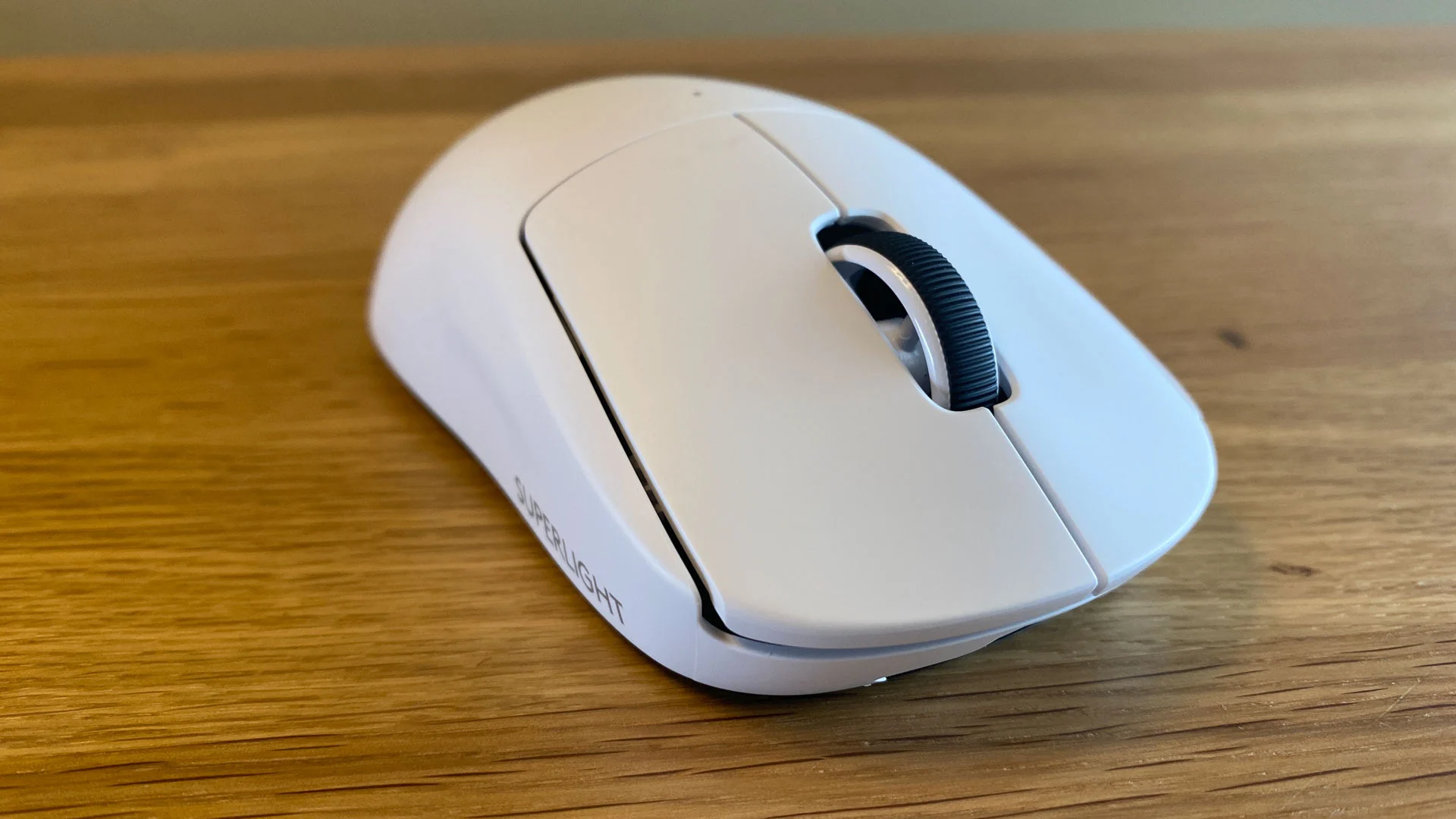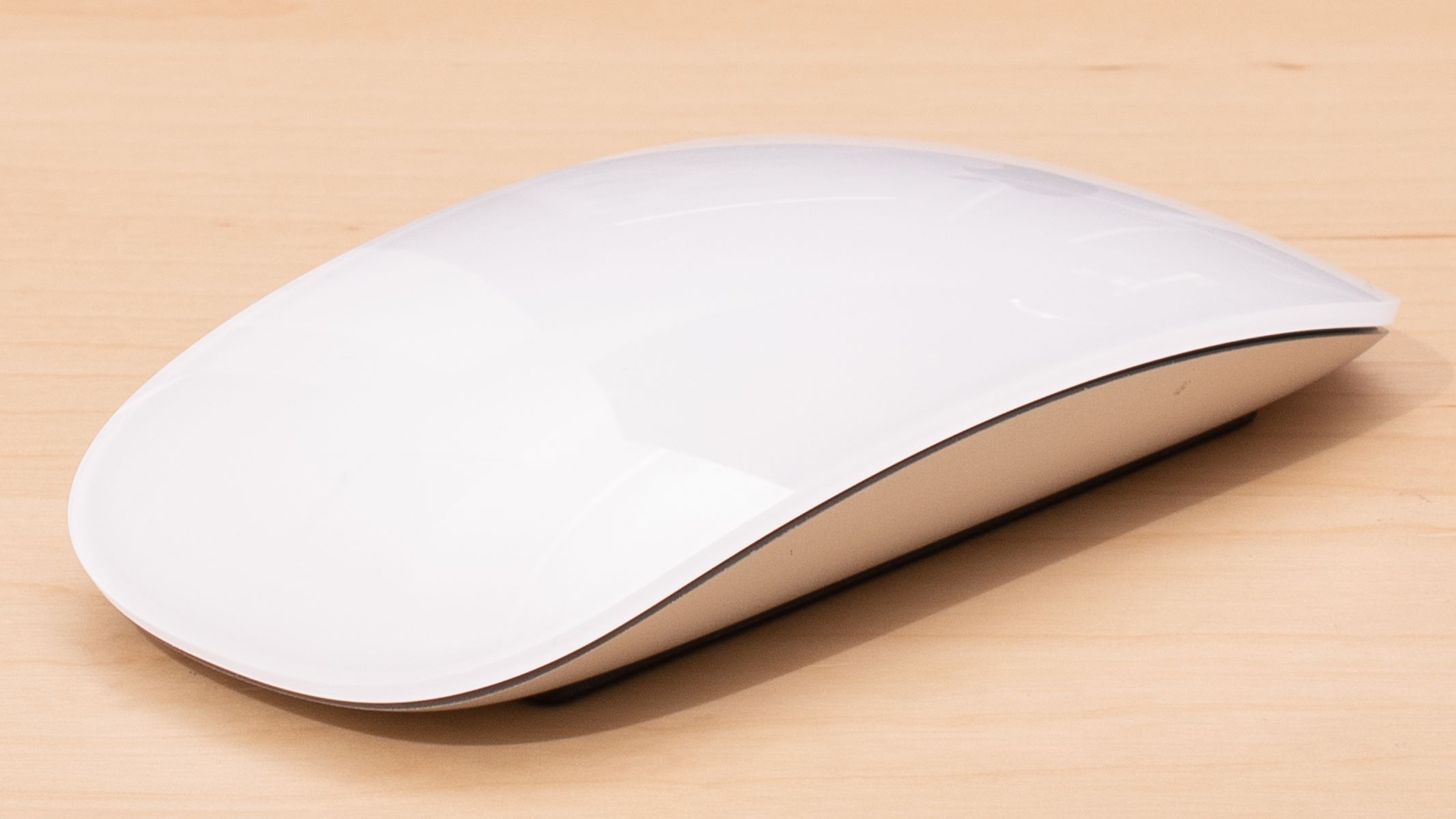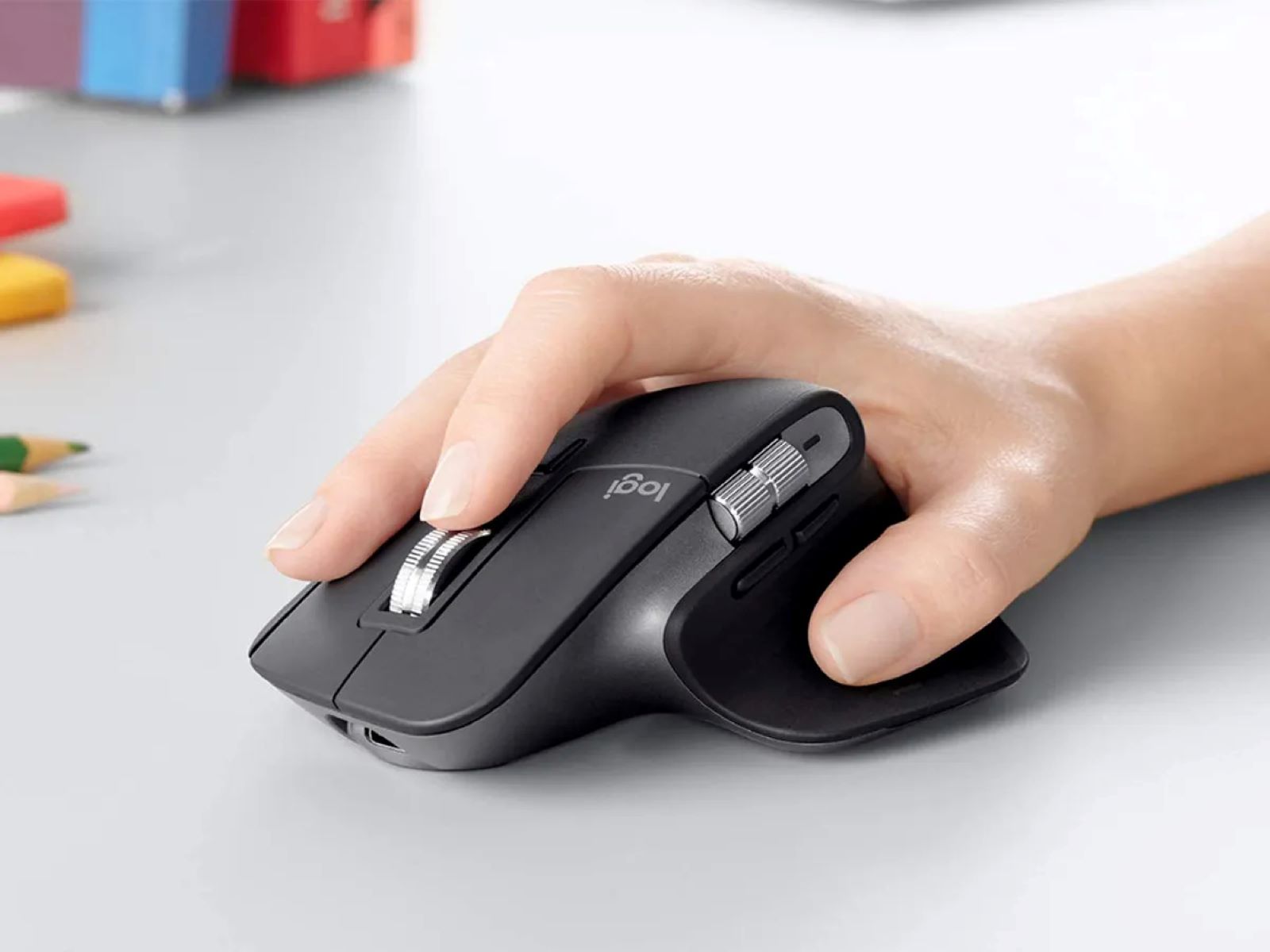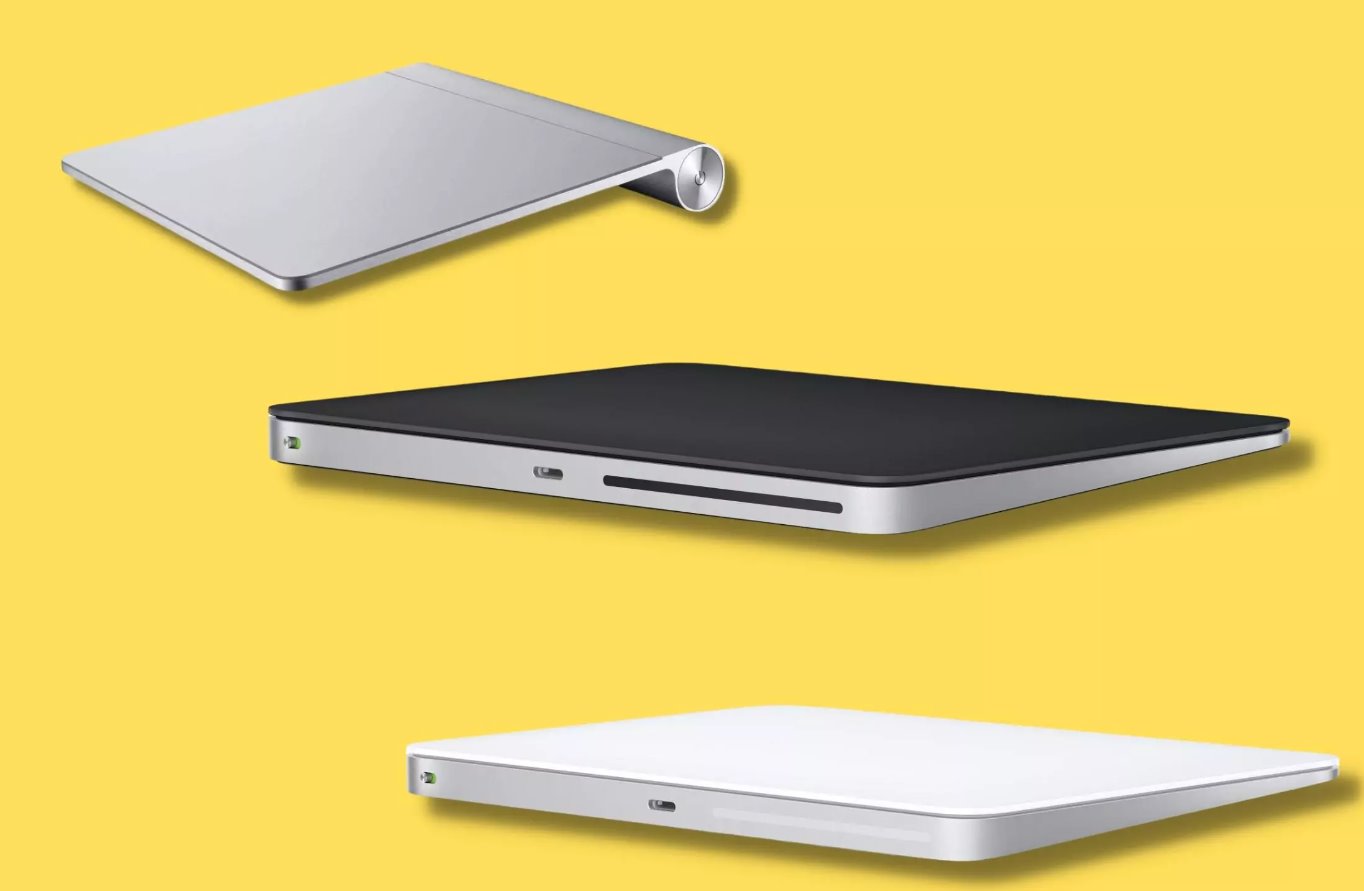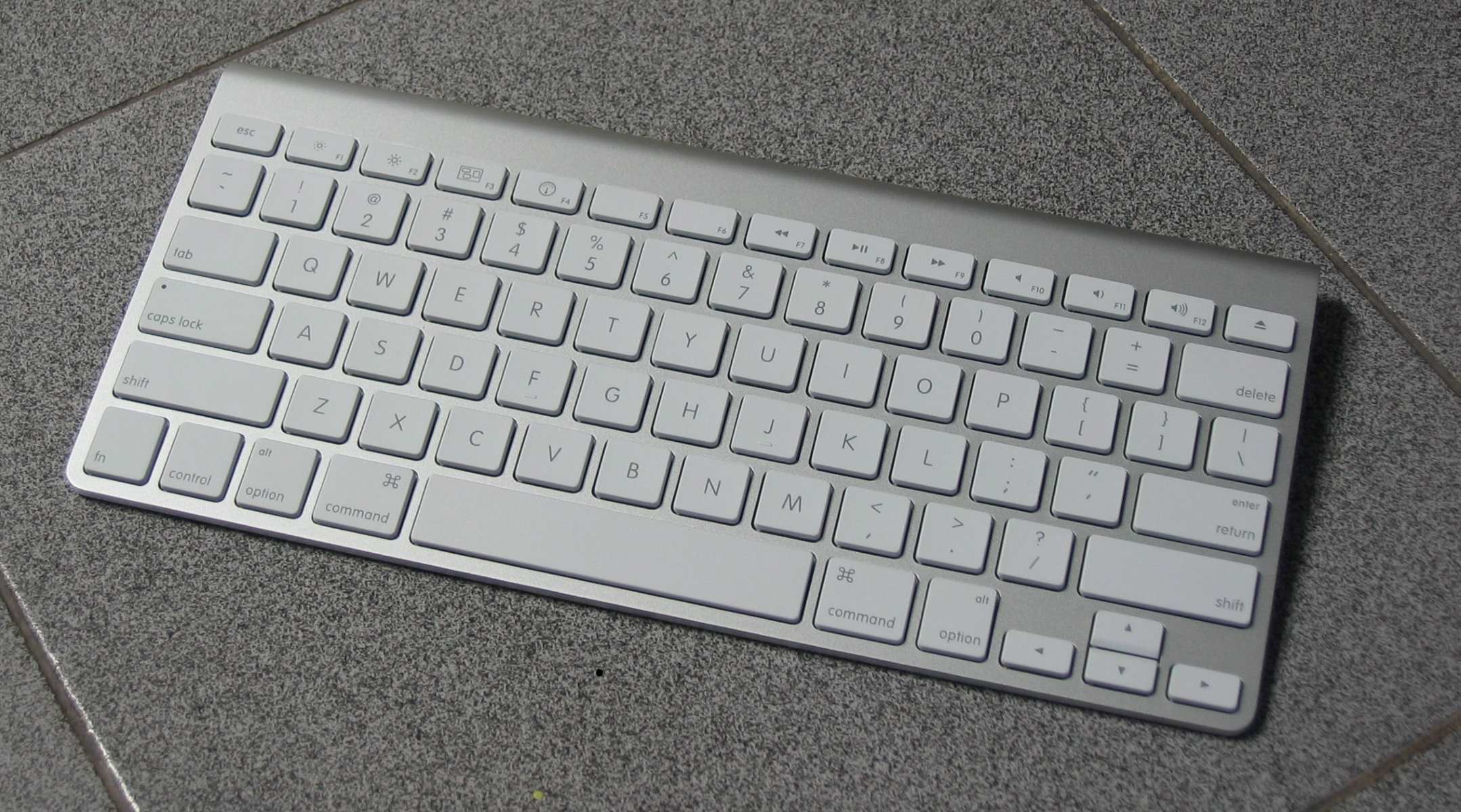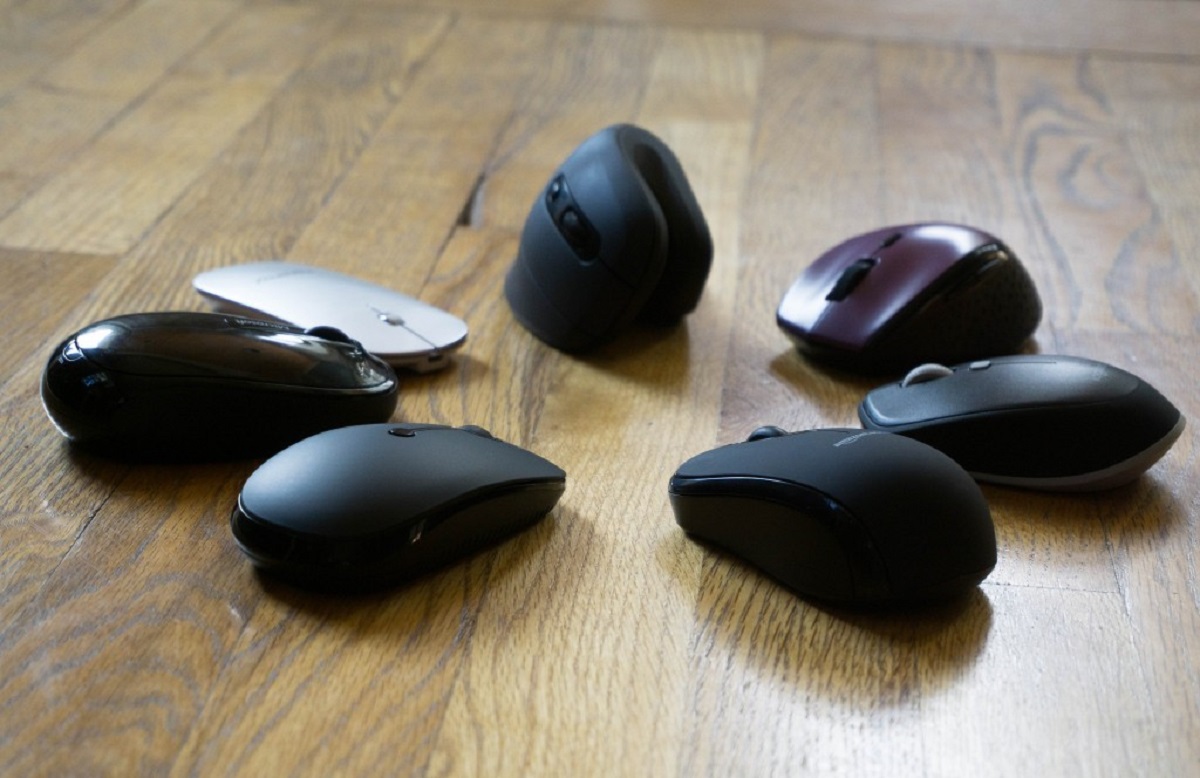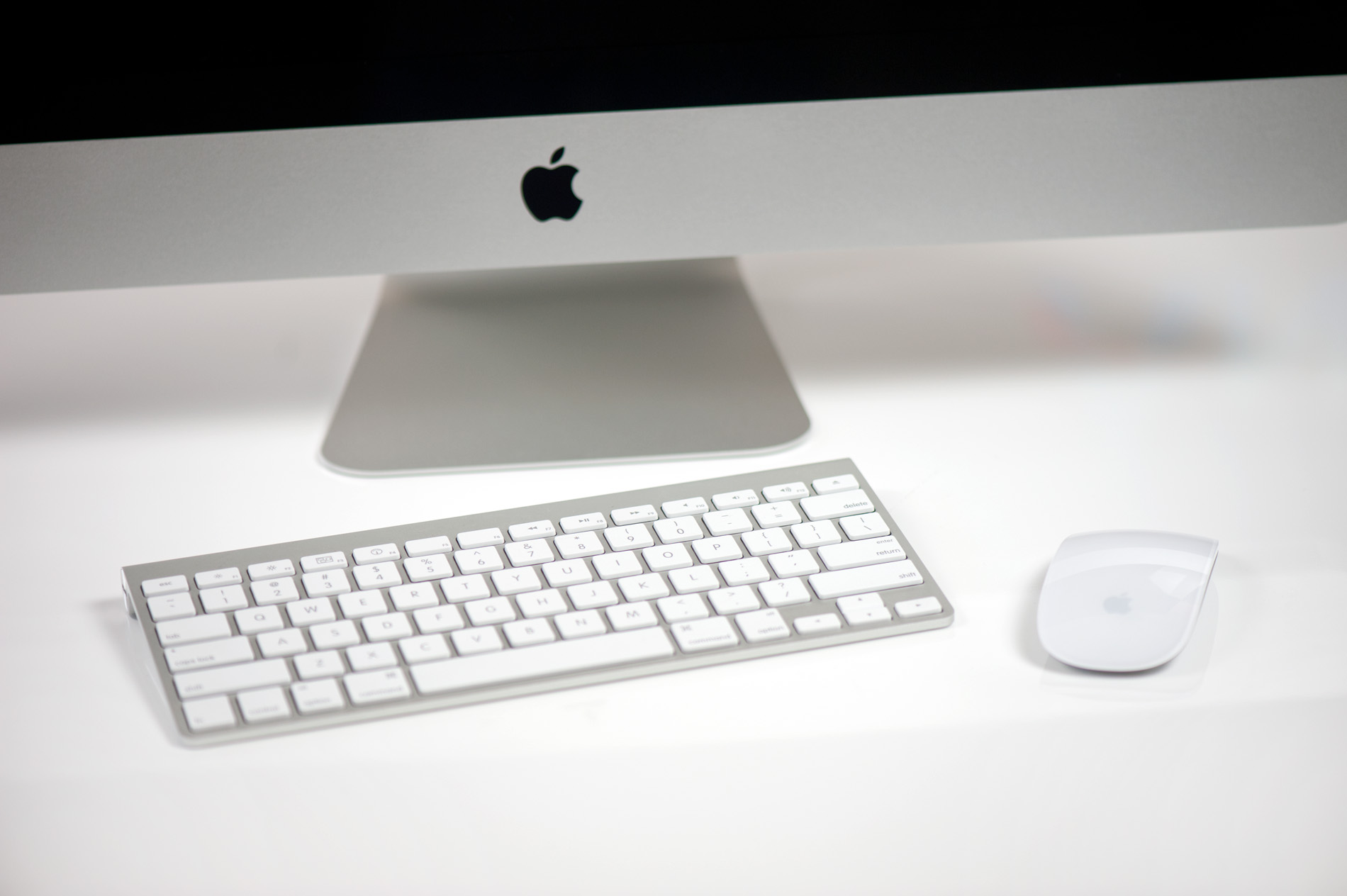Introduction
Welcome to the world of MacBook Pro! As a proud owner of this sleek and powerful device, you are likely aware of its precision-engineered trackpad, which offers an exceptional user experience. However, you may find yourself seeking ways to customize and optimize its settings to better suit your unique preferences and workflow. In this guide, we will delve into the various methods for adjusting the mouse pad on your MacBook Pro, empowering you to tailor its sensitivity, tracking speed, and functionality to match your specific needs.
Navigating the digital realm with ease is paramount, and the ability to fine-tune your mouse pad settings can significantly enhance your productivity and comfort. Whether you are a creative professional, a student, or a business user, the flexibility to adjust your MacBook Pro's mouse pad settings can make a notable difference in your daily interactions with the device.
Through this comprehensive guide, you will gain insights into the importance of adjusting the mouse pad on your MacBook Pro, and you will learn step-by-step instructions for customizing its sensitivity, tracking speed, and unique features such as tap to click and three-finger drag. By the end of this journey, you will be equipped with the knowledge and skills to harness the full potential of your MacBook Pro's trackpad, elevating your overall user experience.
So, let's embark on this exploration together and unlock the full potential of your MacBook Pro's mouse pad! Whether you are a seasoned MacBook Pro user or a newcomer to the world of Apple's innovative technology, this guide will provide valuable insights and practical tips to help you tailor your device to your liking. Let's dive in and discover the art of fine-tuning your MacBook Pro's mouse pad settings.
Why Adjusting Mouse Pad on MacBook Pro is Important
Customizing the mouse pad settings on your MacBook Pro is not merely a matter of personal preference; it can significantly impact your overall user experience and productivity. The ability to adjust the sensitivity, tracking speed, and additional features of the mouse pad can address specific ergonomic needs and streamline your interactions with the device.
Enhanced Precision and Comfort: By fine-tuning the sensitivity of the mouse pad, you can achieve a level of precision that aligns with your unique preferences. Whether you prefer a more responsive touch or a gentler glide, customizing the sensitivity can enhance your comfort and control while navigating your MacBook Pro.
Optimized Workflow: Tailoring the tracking speed of the mouse pad allows you to optimize your workflow based on the tasks at hand. Whether you require swift cursor movements for efficient multitasking or slower, deliberate motions for detailed design work, adjusting the tracking speed can accommodate your specific workflow demands.
Personalized Functionality: Enabling features such as tap to click and three-finger drag empowers you to interact with your MacBook Pro in ways that suit your individual preferences and work style. These customizable features can streamline your interactions with the device, allowing for seamless navigation and enhanced multitasking capabilities.
Ergonomic Considerations: Customizing the mouse pad settings can also address ergonomic concerns, ensuring that your interactions with the device are comfortable and conducive to long-term usage. By adjusting the sensitivity, tracking speed, and additional features, you can create an ergonomic environment that supports your physical well-being during extended computing sessions.
Adaptation to Diverse Tasks: Whether you are engaging in creative endeavors, conducting research, or managing business tasks, the ability to adjust the mouse pad on your MacBook Pro enables you to adapt to the diverse demands of your digital pursuits. Customization fosters a user-centric environment that aligns with your unique needs across various professional and personal endeavors.
By understanding the significance of adjusting the mouse pad on your MacBook Pro, you can harness the full potential of this precision-crafted input device, elevating your user experience and productivity. The next sections will delve into the practical steps for customizing the sensitivity, tracking speed, and additional features of the mouse pad, empowering you to tailor your MacBook Pro to your liking.
How to Adjust Mouse Pad Sensitivity
Customizing the sensitivity of the mouse pad on your MacBook Pro allows you to fine-tune the responsiveness of the trackpad to align with your preferred touch and gesture interactions. Whether you prefer a light touch for precise control or a more pronounced touch for swift movements, adjusting the sensitivity can enhance your overall user experience. Here’s a step-by-step guide to adjusting the sensitivity of your MacBook Pro’s mouse pad:
- Access System Preferences: Begin by clicking on the Apple logo in the top-left corner of your screen and selecting “System Preferences” from the dropdown menu.
- Open Trackpad Settings: Within the System Preferences window, locate and click on the “Trackpad” icon to access the trackpad settings.
- Adjust Tracking Speed: In the Trackpad settings, navigate to the “Point & Click” tab. Here, you will find the option to adjust the tracking speed using a slider. Move the slider to the left to decrease the tracking speed for a more precise control or to the right for faster cursor movements.
- Explore Additional Options: Depending on your MacBook Pro model and operating system version, you may find additional sensitivity settings, such as “Tracking” and “Scroll & Zoom,” which allow for further customization of the trackpad’s responsiveness.
- Test and Refine: After making adjustments, test the sensitivity by navigating the cursor and performing various touch and gesture interactions. Refine the settings based on your comfort and the level of control you desire.
By following these steps, you can tailor the sensitivity of your MacBook Pro’s mouse pad to suit your specific touch and gesture preferences, enhancing your comfort and control while using the trackpad. Whether you are engaged in creative design work, precise document editing, or swift navigation across multiple applications, customizing the sensitivity can elevate your overall user experience.
How to Change Mouse Pad Tracking Speed
Adjusting the tracking speed of your MacBook Pro’s mouse pad allows you to customize the cursor’s responsiveness to your touch and movements, catering to your specific workflow and navigation requirements. Whether you prefer swift cursor movements for seamless multitasking or slower, deliberate motions for detailed tasks, modifying the tracking speed can enhance your overall user experience. Here’s a comprehensive guide to changing the tracking speed of your MacBook Pro’s mouse pad:
- Access System Preferences: Begin by clicking on the Apple logo in the top-left corner of your screen and selecting “System Preferences” from the dropdown menu.
- Open Trackpad Settings: Within the System Preferences window, locate and click on the “Trackpad” icon to access the trackpad settings.
- Adjust Tracking Speed: In the Trackpad settings, navigate to the “Point & Click” tab. Here, you will find the option to modify the tracking speed using a slider. Move the slider to the left to decrease the tracking speed for more precise cursor control or to the right for faster cursor movements across the screen.
- Explore Additional Options: Depending on your MacBook Pro model and operating system version, you may encounter additional tracking speed settings, such as “Scroll & Zoom” and “More Gestures,” which offer further customization to accommodate your specific navigation preferences.
- Test and Fine-Tune: After making adjustments, test the tracking speed by navigating the cursor across different applications and interfaces. Refine the settings based on your comfort and the level of responsiveness that aligns with your workflow and tasks.
By following these steps, you can tailor the tracking speed of your MacBook Pro’s mouse pad to align with your unique navigation preferences, enhancing your efficiency and comfort while interacting with the device. Whether you are engaged in swift web browsing, precise content creation, or seamless multitasking, customizing the tracking speed can elevate your overall user experience and streamline your digital interactions.
How to Enable Tap to Click
Enabling the tap to click feature on your MacBook Pro’s trackpad provides a convenient and efficient method of interacting with the device, allowing you to perform mouse clicks by simply tapping the trackpad surface. This feature streamlines your user experience, eliminating the need for physical clicks and enhancing the fluidity of your interactions with the MacBook Pro. Here’s a step-by-step guide to enabling the tap to click feature:
- Access System Preferences: Begin by clicking on the Apple logo in the top-left corner of your screen and selecting “System Preferences” from the dropdown menu.
- Open Trackpad Settings: Within the System Preferences window, locate and click on the “Trackpad” icon to access the trackpad settings.
- Navigate to Point & Click: In the Trackpad settings, select the “Point & Click” tab to access the primary click and secondary click options.
- Enable Tap to Click: Locate the “Tap to Click” option within the Point & Click settings. Check the box next to “Tap to Click” to enable this feature, allowing you to perform mouse clicks by tapping the trackpad with one finger.
- Adjust Additional Settings: Depending on your preferences, you may explore additional settings within the Point & Click tab, such as the “Click pressure” slider, which allows you to customize the amount of pressure required for a physical click if you choose to utilize this method alongside tap to click.
By following these steps, you can enable the tap to click feature on your MacBook Pro’s trackpad, enhancing the efficiency and fluidity of your interactions with the device. Whether you are navigating web pages, managing documents, or engaging in creative tasks, tap to click offers a seamless and intuitive method for executing mouse clicks, contributing to a more streamlined and ergonomic user experience.
How to Enable Three Finger Drag
Enabling the three finger drag feature on your MacBook Pro’s trackpad provides a versatile and intuitive method for interacting with on-screen content, allowing you to effortlessly move windows, select text, and perform various drag-and-drop actions using a simple three-finger gesture. This feature enhances your overall user experience, offering a seamless and ergonomic approach to manipulating digital elements on your device. Here’s a step-by-step guide to enabling the three finger drag feature:
- Access System Preferences: Begin by clicking on the Apple logo in the top-left corner of your screen and selecting “System Preferences” from the dropdown menu.
- Open Accessibility Settings: Within the System Preferences window, locate and click on the “Accessibility” icon to access the accessibility settings.
- Navigate to Pointer Control: In the Accessibility settings, select the “Pointer Control” tab to access options related to the mouse and trackpad.
- Enable Three Finger Drag: Within the Pointer Control settings, locate the “Trackpad Options” button and click on it to access advanced trackpad settings.
- Activate Three Finger Drag: In the Trackpad Options window, check the box next to “Enable dragging” and select “three finger drag” from the dropdown menu. This action enables the three finger drag feature, allowing you to move windows, select text, and perform drag-and-drop actions with a simple three-finger gesture on the trackpad.
By following these steps, you can enable the three finger drag feature on your MacBook Pro’s trackpad, unlocking a versatile and ergonomic method for interacting with on-screen elements. Whether you are organizing files, arranging windows, or editing documents, the three finger drag offers a seamless and intuitive approach to manipulating digital content, contributing to a more fluid and efficient user experience.
Conclusion
Congratulations! You have embarked on a journey to unlock the full potential of your MacBook Pro’s trackpad by customizing its sensitivity, tracking speed, and enabling intuitive features such as tap to click and three finger drag. By delving into the intricacies of trackpad customization, you have gained valuable insights into tailoring your device to suit your unique preferences and workflow, ultimately enhancing your overall user experience.
Customizing the sensitivity and tracking speed of your MacBook Pro’s trackpad empowers you to achieve a level of precision and responsiveness that aligns with your specific touch and navigation preferences. Whether you prefer a gentle touch for precise control or swift movements for efficient multitasking, the ability to fine-tune these settings ensures that your interactions with the trackpad are comfortable and optimized for your tasks.
Enabling features such as tap to click and three finger drag introduces seamless and ergonomic methods for executing mouse clicks and manipulating on-screen content, offering a more intuitive and fluid approach to interacting with your MacBook Pro. These features streamline your digital interactions, allowing for efficient navigation, effortless selection of content, and versatile drag-and-drop actions using simple gestures.
As you continue to explore the customization options for your MacBook Pro’s trackpad, remember that these settings are designed to adapt to your diverse professional and personal endeavors. Whether you are engaged in creative design work, precise document editing, or seamless multitasking, the ability to tailor your trackpad to your liking fosters a user-centric environment that supports your unique needs across various tasks and activities.
By embracing the art of fine-tuning your MacBook Pro’s trackpad settings, you have taken a proactive step toward enhancing your productivity, comfort, and overall user experience. As you apply these customizations to your daily digital interactions, may your MacBook Pro become a seamless extension of your creativity, efficiency, and individuality, empowering you to navigate the digital realm with precision and ease.







